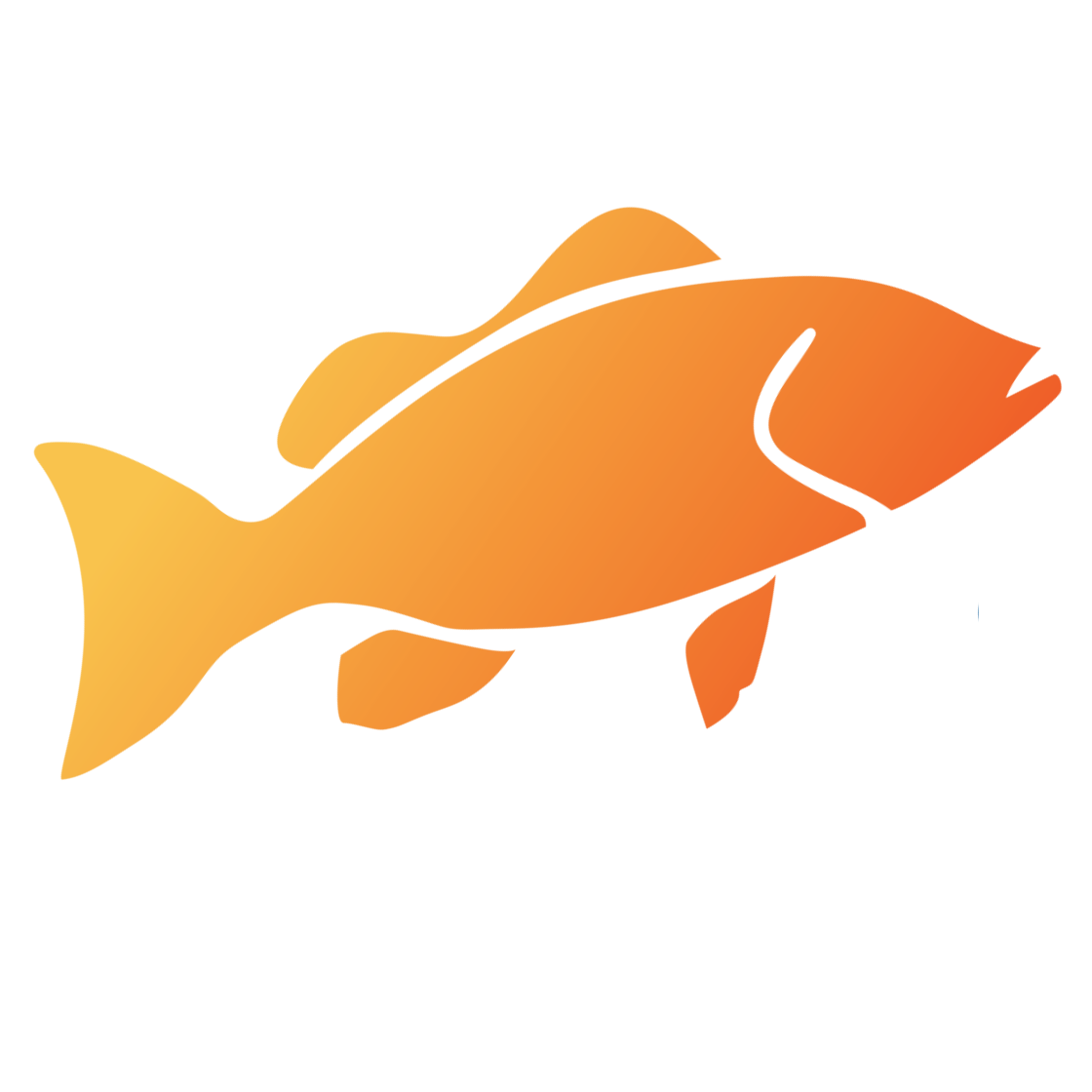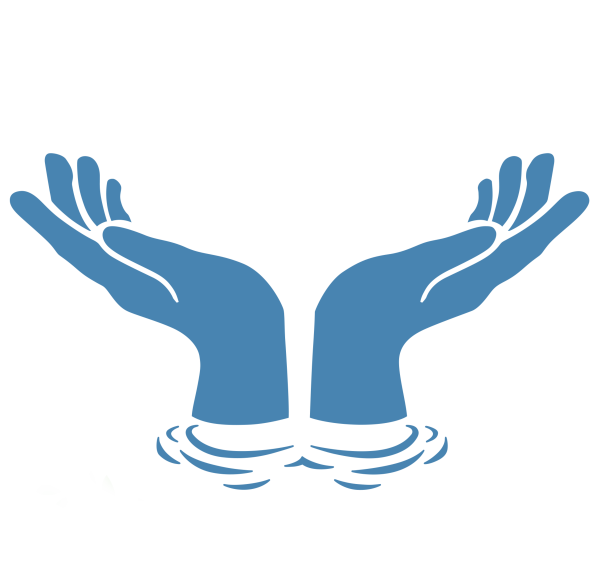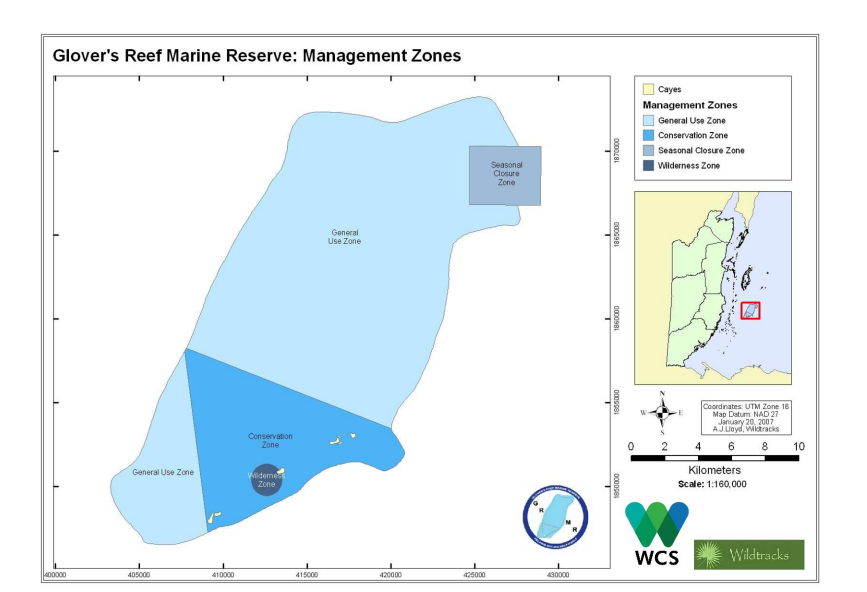GRMR
Glover's Reef Marine Reserve
Glover’s Reef Marine Reserve (GRMR) is located on the southernmost of Belize’s three atolls. It is approximately 45km east of the Dangriga and 75 km southeast of Belize City. It was established in 1993 and is one of the seven protected areas included within the Belize Barrier Reef Reserve System- World Heritage Site and is managed by the Belize Fisheries Department. Access to GRMR is by boat from any of the neighboring communities such as Dangriga, Hopkins or Sittee River but boats visit the area from Belize City and Placencia as well. Glover’s Reef Marine Reserve is approximately 86,653 acres and encompasses the marine portion of the oval-shaped Glover’s Reef Atoll.
The Atoll is 32km long and 12km wide and is considered as the best developed biologically and has the greatest diversity of reef types. The Atoll’s deep lagoon system is dotted with about 850 patch reefs and pinnacles that rise to the surface. Five sand Cayes lie on the reef crest along the southeastern edge. These include South West Cayes I and II, Middle Caye, Long Caye and North East Caye. The peripheral reef of the Atoll is broken in three places by deep channels, allowing for the tidal flow of water between the lagoon and the open sea. There is a large grouper spawning site that is located at the northeastern end of the Atoll.
GRMR is considered one of the highest priority areas in the Mesoamerican Caribbean Reef system, providing recruitment, nursery, feeding and dwelling areas for lobster, conch and finfish, and providing unique fish habitat in the interior lagoon. It is an important component of not only Belize’s national marine protected areas system, but also at a regional and international level, being designated by UNESCO in 1996 as one of seven protected areas that together form the Belize Barrier Reef Reserve System – World Heritage Site.
The Glover’s Reef Marine Reserve Statutory Instrument was updated in 2001 (SI 137 of 2001), and currently designates five different management zones: the General Use Zone, a Conservation Zone, a Wilderness Zone and a Seasonal Closure Zone, with each zone having regulations defining activities that can and can’t be done. The protected area is considered to be within IUCN category IV – a Habitat/Species Management Area, with active management targeted at conservation through management intervention.
Rules and Regulations
General Use Zone
The General Use Zone is the largest of the four zones, with an area of 26,170 ha, (74.6% of the marine reserve), and is divided between two areas -the majority of the northern part of the atoll, and a smaller portion in the south.
Fishing is permitted in the General Use Zone. Priority is given to fishermen who have traditionally used the area via a Manage Access Program and a special licenses system was implemented to limit the number of fishermen extracting the natural resources. There are gear restrictions within the General Use Zone, including a ban on the use of fish traps (the term ‘fish’ being used to include all forms of commercial marine animal), nets, long lines and spear fishing (though spear fishing is soon to be prevented under the new revisions to the regulations.
Conservation Zone
The Conservation Zone is the second largest zone, comprising about 7,077 ha or 20.2% of the southern portion of the atoll. There are only non-extractive activities that are permitted in this area.
Wilderness Zone
This zone, equivalent to a “Preservation Zone”, is the smallest of the zones, encompassing an area of only 270 ha. It is located within the Conservation Zone, just south of Middle Caye, lying along the southeastern reef tract.
Seasonal Closure Zone
This zone encompasses the Nassau grouper spawning bank located on the northeast corner of the atoll. It covers an area of 1,550 ha, including the channel in the reef and extending out to the deep water of the fore reef and drop off. This zone overlaps with the more recent Spawning Aggregation Site.
Spawning Aggregation Zone
This zone is permanently closed to fishing to protect the spawning aggregation site. It overlaps the Seasonal Closure Zone, but is more specifically linked to the area covered by the Spawning Aggregation Site.
Programs
Administration
The administration of the Marine Reserve is the responsibility of the Fisheries Department, under the Ministry of Agriculture , Fisheries and Sustainable Development. Glover’s Reef Marine Reserve is managed under the Ecosystems Management Unit of the Fisheries Department, and the Reserve Manager reports directly to the Unit’s Marine Protected Area Coordinator.
Natural and Cultural Resource Management
Deals with direct management of the marine environment, surveillance and enforcement. This includes activities such as delineating boundaries, and enforcing no-fishing regulations.
Research and Monitoring
Research and monitoring are essential activities to ensure informed, effective management, and to assess the effectiveness of the Marine Reserve in achieving its objectives. The Reserve Biologist is the officer primarily responsible for this programme. At Glover’s Reef, Fisheries Department works closely with Wildlife Conservation Society in the areas of research and monitoring, with much of the WCS research being focused on providing information for identified gaps and filling research and monitoring priorities. The Biologist cover’s monitoring of commercial species such as Conch, Lobster and finfish and of Coral reef health in addition to other research done with WCS.
The Wildlife Conservation Society research station is located on Middle Caye within the marine reserve, and provides a mechanism for conducting much of the management-related research required. As such, it serves as a valuable resource to the reserve management team.
Research proposals are reviewed by the Fisheries Department, and if approved, a research license is granted on an annual basis. Plans are underway to establish a research review committee to carry out this function, thus expanding the knowledge base feeding into the decision-making process. Recommendations have also been made to include the Reserve Manager and Biologist on this committee (as ex officio members), when projects proposed for the Glover’s Reef Marine Reserve are being reviewed.
Community Participation
Glover’s Reef Marine Reserve has a number of mechanisms for ensuring community participation in reserve activities. There is stakeholder representation on the Glover’s Reef Advisory Committee (GRAC), which makes recommendations towards the management of the protected area. There has also been an increased focus on engaging traditional fishermen through participation in monitoring activities.
There is stakeholder participation from traditional fishermen on the Manage Access Committee (MAC); which vets managed access licenses for Glover’s Reef Marine Reserve. They also play a key role in deciding the outcome of fishermen who were convicted of offenses at Glover’s Reef.
Public Use
Glover’s Reef Marine Reserve has a number of mechanisms for ensuring community participation in reserve activities. There is stakeholder representation on the Glover’s Reef Advisory Committee (GRAC), which makes recommendations towards the management of the protected area. There has also been an increased focus on engaging traditional fishermen through participation in monitoring activities.
There is stakeholder participation from traditional fishermen on the Manage Access Committee (MAC); which vets managed access licenses for Glover’s Reef Marine Reserve. They also play a key role in deciding the outcome of fishermen who were convicted of offenses at Glover’s Reef.
Infrastructure Management
Covers activities such as the future infrastructure, and equipment, and maintenance of present infrastructure (buildings, jettys etc.). There are basic living quarters available for staff that covers their rooms, kitchen, office, a storage area and a gas house.













